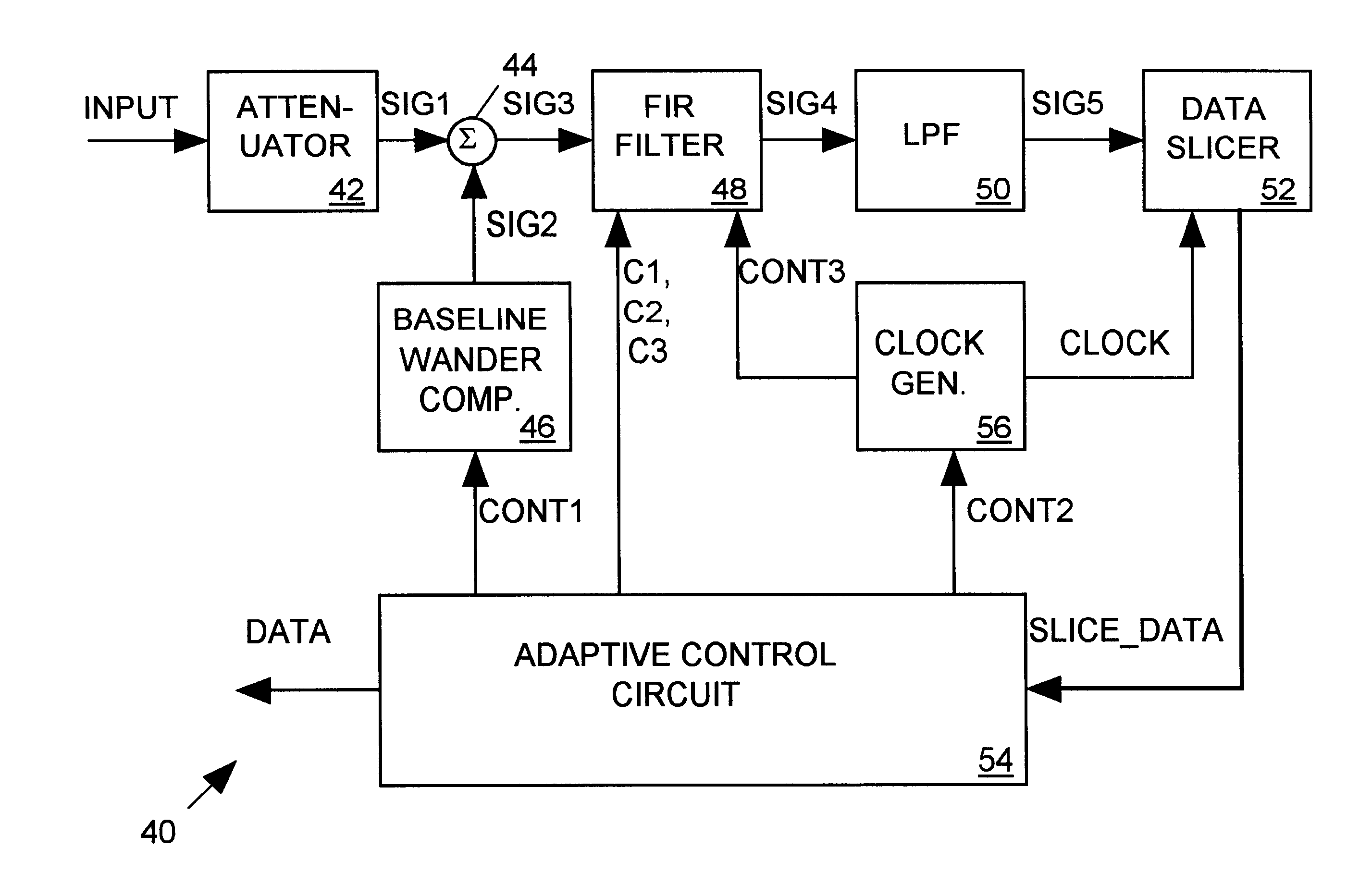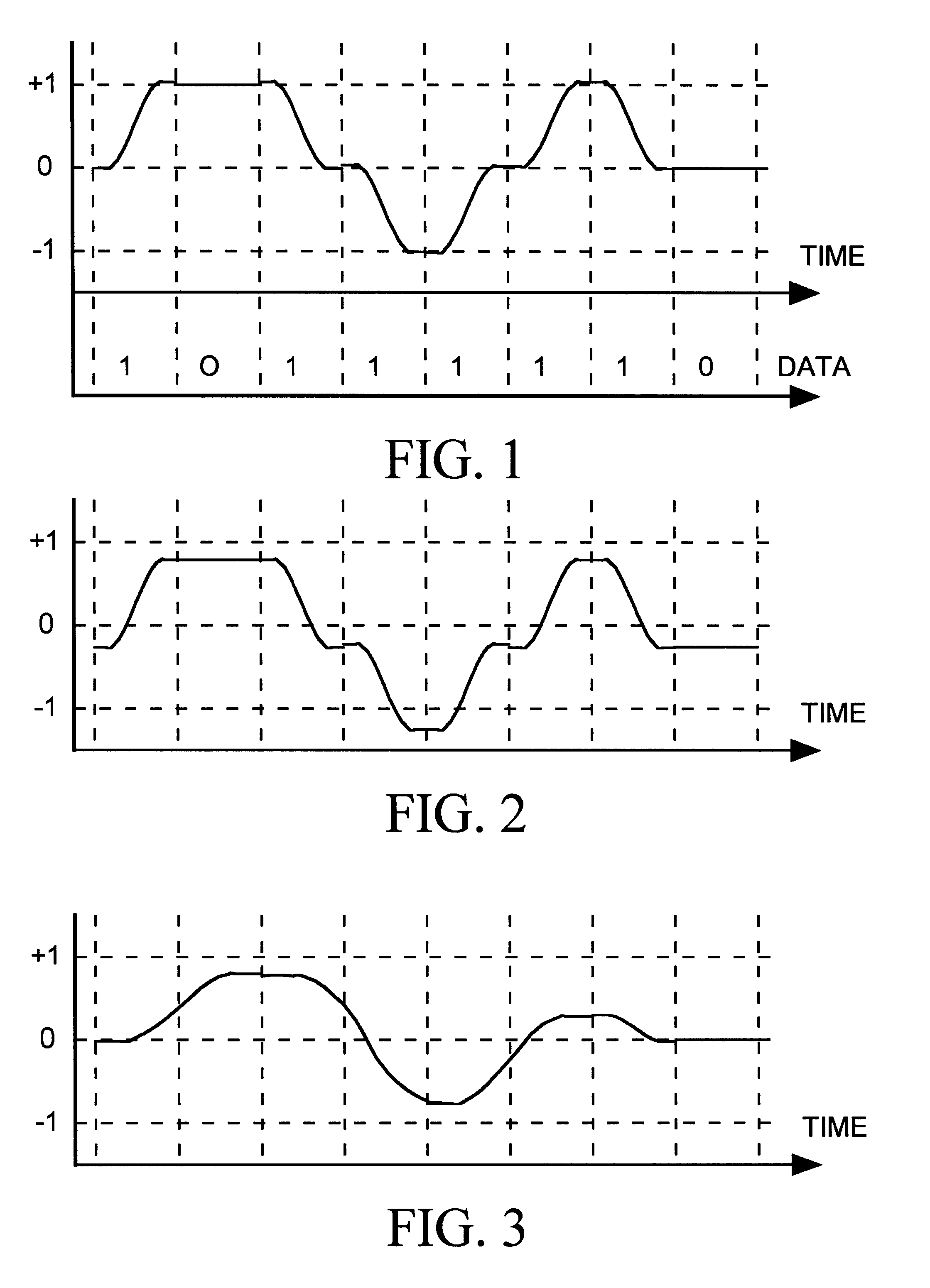FIR filter architecture for 100Base-TX receiver
- Summary
- Abstract
- Description
- Claims
- Application Information
AI Technical Summary
Problems solved by technology
Method used
Image
Examples
Embodiment Construction
)
Receiver Architecture
The present invention relates to a 100Base-TX receiver for receiving an MLT-3 encoded input signal and producing a digital output signal representing a data sequence conveyed by the INPUT signal. In accordance with the invention, the receiver employs an adaptively-controlled, three-stage, finite-impulse response (FIR) filter to provide both automatic gain control compensation and equalization for the MLT-3 encoded waveform. Since the FIR filter requires only three stages to provide compensation and equalization, its implementation does not require a large number of circuit components. The use of a three-stage FIR filter to provide equalization and compensation therefore reduces the amount of area on an integrated circuit die needed to implement a 100Base-TX receiver and allows the receiver to operate with less power than prior art 100Base-TX receivers.
FIG. 5 illustrates in block diagram form a 100Base-TX receiver 40 in accordance with the present invention. Rec...
PUM
 Login to View More
Login to View More Abstract
Description
Claims
Application Information
 Login to View More
Login to View More - R&D
- Intellectual Property
- Life Sciences
- Materials
- Tech Scout
- Unparalleled Data Quality
- Higher Quality Content
- 60% Fewer Hallucinations
Browse by: Latest US Patents, China's latest patents, Technical Efficacy Thesaurus, Application Domain, Technology Topic, Popular Technical Reports.
© 2025 PatSnap. All rights reserved.Legal|Privacy policy|Modern Slavery Act Transparency Statement|Sitemap|About US| Contact US: help@patsnap.com



